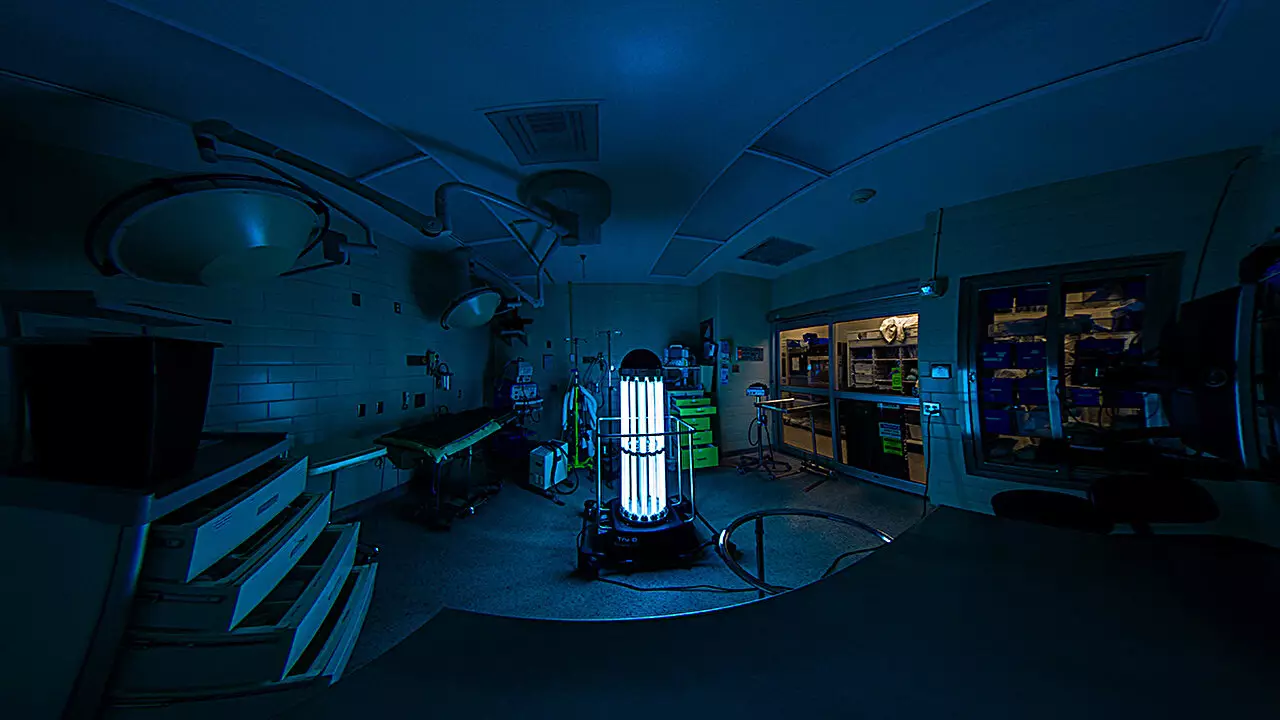Robots are rapidly becoming an integral part of our daily lives. From cleaning robots to robotic lawn mowers, these technological marvels are changing the way we interact with our environment. One particular application of robots, however, is revolutionizing the healthcare industry. Hospitals are now adopting robotic technology to enhance cleanliness and prevent the spread of infections. In this regard, the Texas A&M Veterinary Medical Teaching Hospital (VMTH) has recently acquired a stationary robot called Tru-D or “Trudy.” Utilizing a combination of ultraviolet C (UVC) centers and specialized bulbs, Trudy aims to eradicate even the most resilient infection-causing bacteria that linger on surfaces, thus ensuring the safety of patients, staff, and the community at large.
Trudy, the hospital robot at the VMTH, serves a distinct purpose compared to the likes of Roombas and robotic suitcases commonly found in households. This stationary robot employs a powerful set of 28 bulbs and eight UVC centers to efficiently eliminate bacteria that can be found on walls, floors, and tables. Notably, certain bacteria, such as those responsible for staph infections, can persist in the environment for extended periods, even after traditional cleaning methods have been applied. Recognizing the importance of sanitation protocols in a healthcare setting, Pam Douglas, the infection control coordinator at VMTH, championed the addition of Trudy to the hospital’s existing rigorous cleaning procedures. Having witnessed UVC disinfection robots in action during her time as a registered nurse, Douglas recognized the potential benefits offered by Trudy.
Manual sanitation is undoubtedly effective but requires significant time and energy. At the VMTH, operating rooms undergo meticulous manual cleaning, involving the removal of all items, thorough cleaning of the space including walls and ceiling, and the careful sterilization of each equipment piece before it is returned to the room. This process, overseen by Katy Wendler, the assistant hospital administrator, necessitates the presence of three technicians for approximately 30 minutes. However, with the introduction of Trudy, the hospital staff can now allocate their time more effectively. Trudy can perform random cleanings of rooms, even those that have not been recently used. This allows the staff to attend to more pressing duties, including providing additional care and attention to patients. While manual cleaning remains an essential component of the VMTH’s infection control strategy, Trudy’s presence has undoubtedly elevated the hospital’s capabilities.
Trudy, with its cylindrical shape and towering height, bears a striking resemblance to the robots depicted in science fiction works. Adorned with UVC lights running vertically along its sides, Trudy creates an imposing presence. Once placed within a room, Trudy employs its 360-degree sensors to gauge the room’s size and determines the appropriate duration for the disinfection cycle. Smaller rooms typically require 15-20 minute cycles, while larger rooms may take up to 30-40 minutes. Although UVC disinfection robots are relatively common in human hospitals, their implementation in veterinary hospitals remains scarce. Since Trudy’s introduction earlier this year at the VMTH, it has been utilized over 800 times, spanning various hospital areas such as operating rooms, exam rooms, isolation rooms, and the intensive care units of both the large animal and small animal teaching hospitals.
Despite its advanced features, Trudy is remarkably user-friendly and can be operated by anyone after receiving basic training. In addition to the infection prevention department, several staff members have undergone training in running Trudy, thus ensuring smooth and efficient utilization of this cutting-edge technology. Seamlessly integrated with an iPad, all controls can be easily accessed, contributing to the overall simplicity of Trudy’s operation.
In collaboration with Trudy, the VMTH continues to uphold the highest standards of infection control. While manual cleaning remains an integral aspect, Trudy serves as a valuable complement to the hospital’s ongoing efforts. By harnessing the power of UVC lights, Trudy eradicates harmful bacteria and raises the bar for infection prevention. As Pam Douglas aptly expressed, Trudy is not just an enhancement for patients, staff, and faculty, but for the entire community. By leveraging state-of-the-art technology, Trudy ensures that the VMTH provides an environment that is safe and conducive to healing.



Leave a Reply